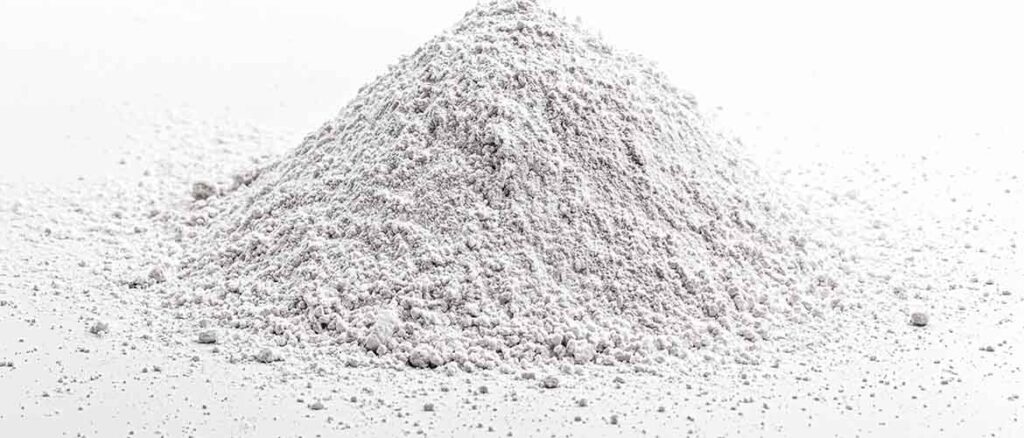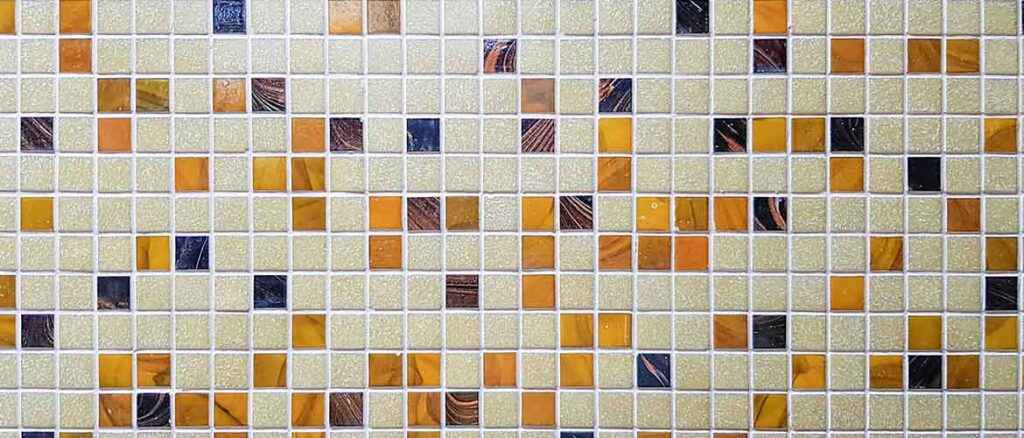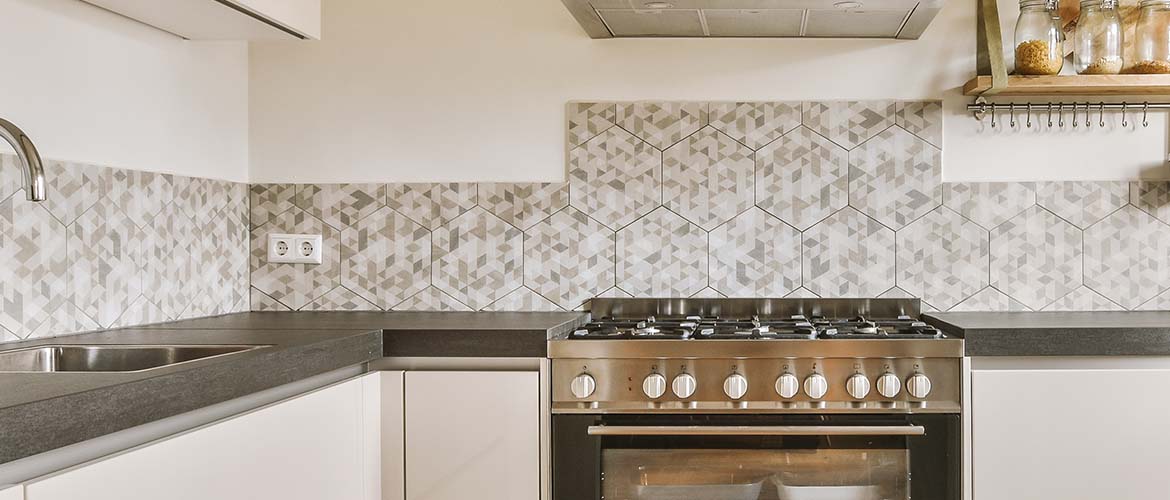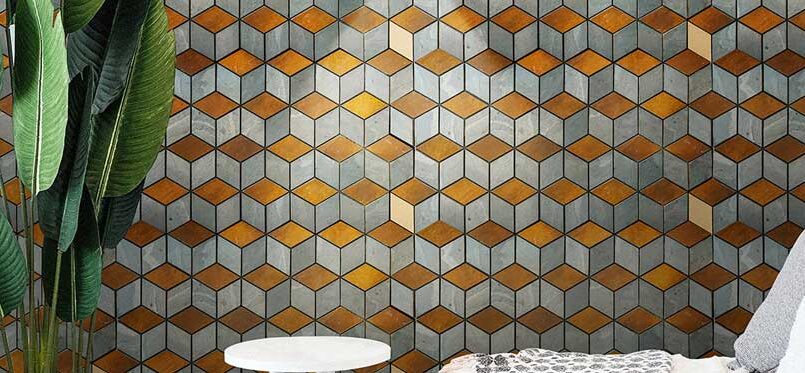Grouting Tips for Mosaic Tiles at Home | Luxury Handicraft Art
Mosaic tiles are made up of small pieces of different colored stone, glass, or tiles. They come in a variety of patterns and designs, each with their own unique beauty and appeal, enhancing the beauty of your bathroom, kitchen, and other home decor designs. They are also used as flooring and wall cladding, which can be used in both indoor and outdoor spaces.
These aesthetic beauties are usually sealed and well-grouted to prevent water seepage. Water seeping into a mosaic tile collection is a common issue and can be prevented by regular sealing and grouting. A well-grouted mosaic tile collection will also have a beautiful sheen and patina, that gives a unique finish to your mosaic masterpieces.
Experts from Luxury Handicraft Art, sellers of beautiful mosaic tile collections in India, tell us more about grouting mosaic tiles.
What Is Grout? How Should I Grout Mosaic Tiles?

Grout is a substance that is used to fill small gaps between the tiles while they are being installed. It prevents water from seeping into the tile and also adds a decorative appeal to your mosaic design. There are different kinds of grouts, such as solid, fluid, and cultured. Each has their own advantages and disadvantages, so it is best to choose the one that is right for your tile.
Grout is generally made of cement or a mixture of cement and sand. With advancement in technology these days, one can find grout that is made of ceramic, plastic, and even epoxy. The type of grout you choose will depend on the type of tile you have. At Luxury Handicraft Art, one can find unique mosaic tile collections in India, and our team helps homeowners choose the best grouting material for their mosaic tiles.
Since we are discussing mosaic tiles, we will talk about 3 primary types of grout that you can use on your mosaic tiles.
1. Powder Grout

This is the most common type of grout. It consists of a mixture of sand and cement. It is easy to mix and use, and anyone with a little knowledge of grouting can do it. Powder grout is primarily available in ‘sanded’ & ‘un-sanded’ versions, and experts suggest that you use the un-sanded version to prevent scratching of your mosaic tiles.
It can also be mixed in different colors to add more design elements to your mosaic tiles. On the other hand, powder grout also has its share of disadvantages. It is not water-resistant, and it can cause cracks in the grouted areas if it is not applied evenly. It also becomes brittle after it has dried, so it needs to be sealed.
Find customizable mosaic tile collections in India at Luxury Handicraft Art. Browse through our latest collection today!
2. Epoxy Grout

The next grout type is epoxy. It is similar to powder grout in that it consists of sand and cement. However, it contains a resin that becomes hard when it is exposed to heat. This makes it ideal for grouting mosaic tiles that are used in wet areas, such as bathrooms.
This type of grout is made of a resin and an epoxy. It is more expensive than other types of grouts, but it is also more durable and water-resistant. It is also better sealed than other types of grouts. It has a gel-like consistency, which makes it easy to apply and control.
Epoxy grout is also the hardest to work with, as it requires a lot of skill and experience to apply. It is used when you want the grout to be both water- and stain-resistant. It is also used when you want to add a decorative design to your grout, such as a border or a pattern.
While shopping at Luxury Handicraft Art, you can find some of the best quality mosaic tile collection in India. Our experts will also advice you on the best grout to use for your mosaic tiles.
3. Premixed Grout

The third type of grout is premixed. It is a mixture of cement and sand that has been pre-colored to match your tile. It is easy to use and has little to no smell. It is also cheaper than the other types of grouts.
More recently, urethane based grouts are also popular. These are made of a polymer resin and are used primarily for their water-resistant properties. They are usually more expensive than epoxy grouts, but are easier to apply. They are also stain-resistant, making them a good choice for outdoor mosaic tiles.
Urethane based grouts are similar to epoxy grouts in that they are both water-resistant and hard. They are also stronger than other grouts, making them ideal for grouting mosaic tiles in high-traffic areas. They can also be used in wet areas and are also easy to work with.
Remember, you need the best quality grout for the best mosaic tile collection in India. Talk to our sales team to design your home with latest collection of mosaic tiles from Luxury Handicraft Art.
How To Grout My Mosaic Tiles?

Once you have decided the right type of grout for your mosaic tiles, it is time to set your mosaic tiles.
The mosaic pieces are arranged in the desired pattern and glued to the substrate using a PVA based adhesive. Once the mosaic pieces are glued to the substrate, it is now time to start grouting.
1. Prepare the grout mixture as per instructions on the package.
2. Apply the grout mixture on the mosaic tiles using a grout spreader. Ensure that the grout is spread evenly on the mosaic tiles, and sufficiently in between the gaps.
3. Use a spatula to remove excess grout from the substrate.
4. Let the grout permeate between the gaps and set well.
5. Use a damp cloth and wipe the grout off the mosaic tiles’ surface.
6. Let it dry for a few hours and buff it with a dry cloth.
7. Use a grout sealer to seal the grout joints.
If you are having a hard time choosing the best grout for your needs, contact the team at Luxury Handicraft Art, top-sellers of mosaic tile collections in India.
How To Decide How Much Grout You Will Need?

When deciding how much grout to use, it is important to consider the size and shape of your mosaic tiles. The amount of grout required will also vary depending on the type of grout you are using. Powder grouts require the least amount of grout to cover the tiles, while epoxy grouts require the most. The amount of grout required will also vary depending on the type of grout you are using.
Grouting Mosaic Tile Art

When grouting mosaic tile art, it is important to adjust the grouting process to account for the size and shape of the tiles. This is because mosaic tile art is likely to be smaller and cut into intricate shapes. Because of this, it may require more grout than usual to cover the tiles. It is also important to use a grout mixture that is appropriate for the type of tile art.
It is also important to note that grouting mosaic tile art requires more time than grouting regular tile. This is because you have to take extra care in ensuring that the grout is applied evenly and sufficiently in between the gaps.
Do not worry! When you shop for the latest mosaic tile collections in India from Luxury Handicraft Art, our experts will help you find the right grouting material too.
Conclusion
Grouting mosaic tile is an easy way to add color and design to your home. It is an ideal way to accentuate the natural beauty of your flooring and also adds value to your floor. When grouting mosaic tile, it is important to ensure that the grout is applied evenly and sufficiently in between the gaps. This will ensure that your floor looks beautiful without any dirt or flaws.
If you are in the market for charming mosaic tile collections in India, Luxury Handicraft Art is your destination. Call us today to start planning your next project.









